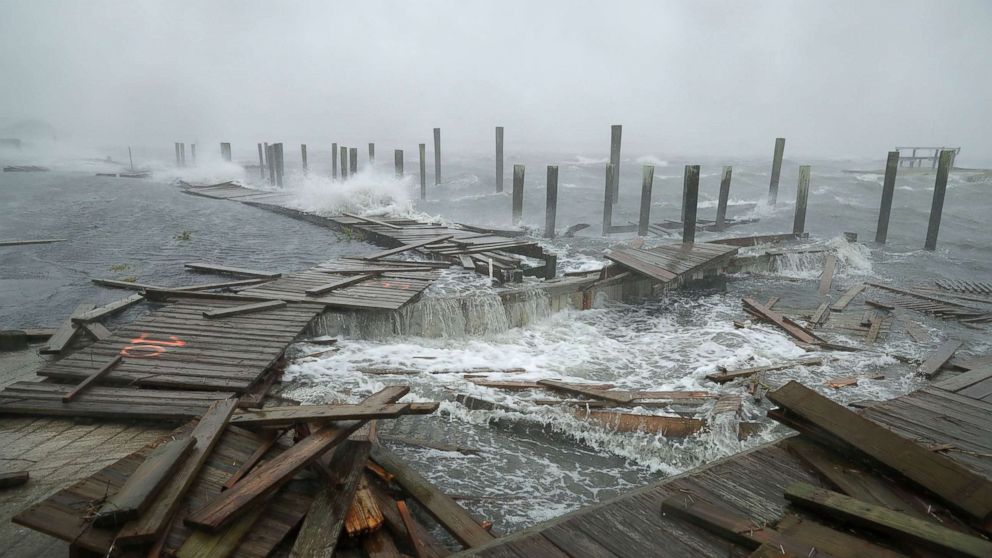
Hurricane Florence is slamming into the East Coast, knocking out power in North Carolina, dropping torrential rains and inundating several areas with floodwater.
Here is a look at the dangerous storm by the numbers:
4: The number of fatalities so far. The first death attributed to Florence was in coastal Pender County, North Carolina. An official there called it a “storm-related medical fatality” but did not elaborate.
Police in Wilmington police later disclosed that a mother and an infant were killed when a tree fell on their home. The husband was transported to a local hospital with injuries, according to police.
North Carolina Gov. Roy Cooper said one person died in Lenoir County while plugging in a generator.
105 mph: As the storm made landfall Friday morning, Wilmington, North Carolina, was hit by a 105 mph wind gust, the strongest wind in the city since 1958.
150: The number of people who needed to be rescued in flooded New Bern, North Carolina, where water levels reached 10 feet overnight.
The downtown area, at the confluence of two rivers, is mostly underwater.
Volunteers are using private boats to pitch in and help, city spokeswoman Colleen Roberts said.
New Bern resident George Zaytoun, who chose not to heed evacuation warnings and is now trapped inside his home, told “Good Morning America,” “It’s like a bomb has gone off.”
“Everything around us is underwater,” he said.
“This is twice the size of Hurricane Hugo,” which tore through the Carolinas in 1989, New Bern Mayor Dana Outlaw told “Good Morning America.”
At least 100 people have been rescued from New Bern as of Friday morning, North Carolina Gov. Roy Cooper said.
310: Number of volunteers from nine different states helping the Cajun Navy with rescues.
57: Number of people the Cajun Navy says they rescued Friday morning, according to the founder of the group, Todd Terrell.
30 inches: Preliminary reports show more than 30 inches of rain in Atlantic Beach, North Carolina, according to the U.S Geological Survey. If confirmed by the National Weather Service, this number would break the state record for rainfall from a tropical cyclone.
615,849: Number of customers without power in North Carolina.
74,040: Number of customers without power in South Carolina.
30: Number of collisions overnight as road conditions deteriorated, according to the North Carolina State Highway Patrol.
1 million: Up to 1 million people have evacuated their North Carolina homes, Gov. Cooper said Friday.
20,000: More than 20,000 people in six states — North Carolina, South Carolina, Virginia, Georgia, Maryland and Tennessee — took shelter in 206 Red Cross and community shelters on Thursday.
730,000: The number of blankets available for evacuees. Six-thousand cots and 6 million meals have also been provided.
11 feet: Storm surge may reach this point in parts of North Carolina.
“People do not live and survive to tell the tale about what their experience is like with storm surge,” FEMA administrator Brock Long told “GMA.”
40 inches: Rainfall could reach this point.
2,800: Number of North Carolina National Guard soldiers and airmen and airwomen who are activated. More than 500 of them are already responding to calls across the state.
13: Number of nuclear reactors the Nuclear Regulatory Commission is monitoring near Florence’s path.
19: Number of states sending teams to help North Carolina help with Florence.
ABC News’ Rachel Katz, Morgan Winsor and Dom Proto contributed to this report.





